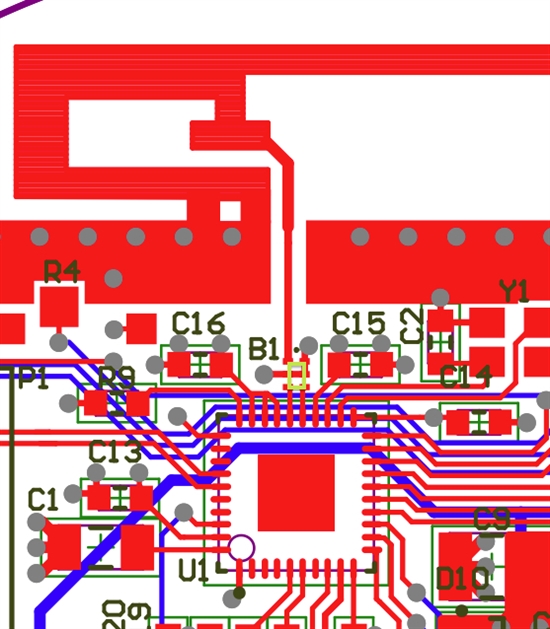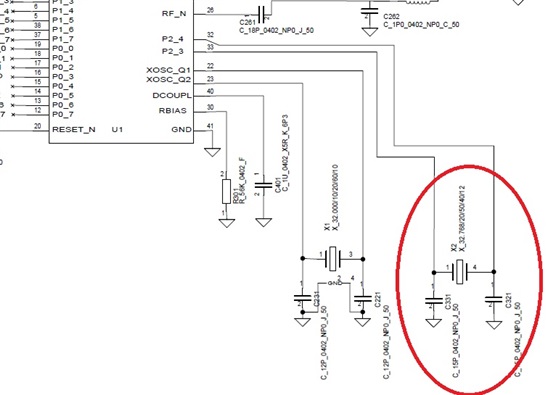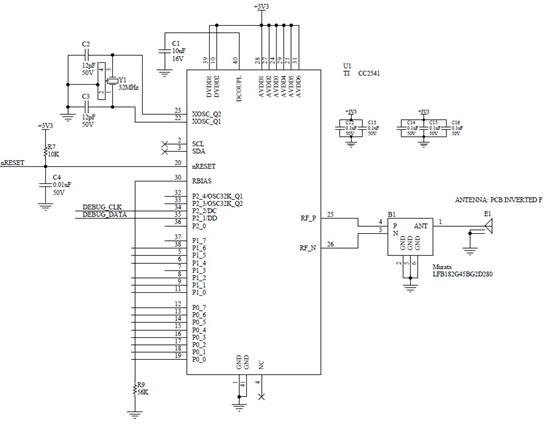I've designed my first pcb with an inverted f antenna solution and I'm having problems getting it to communicate to the iphone test app designed by TI. I have a keyfob pcb that connects fine. Both the keyfob and this design are programmed with the same code. I was hoping you guys could take a look and see if something obvious is wrong.
I'm not an RF or antenna expert. I've followed the design notes and I'm using a Murata Balun documented here. I've attached a screenshot of the pcb layout. The area in the green box is where the balun sits. Pins 2, 5 and 6 are connected to ground. Pins 3 and 4 are connected to pins 26N and 25P of the CC2540 respectively. Pin 1 is connected to the antenna design. The balun is as close to the chip and antenna as possible. There is a power plane and ground plane in the middle layers that is not shown in the image below. The planes do not extend under the antenna.
I don't have a way to measure the antenna impedance. Although I would have assumed that a weak signal would have at least connected to an iPhone when the device is within inches.
Any help in debugging this would be great, thanks!




